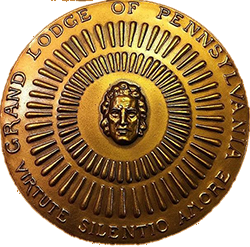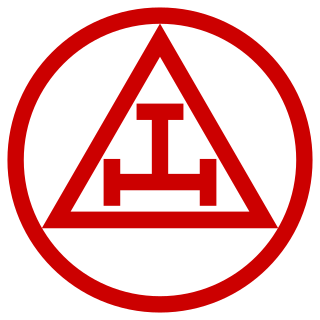| |||||
| Centuries: | |||||
|---|---|---|---|---|---|
| Decades: | |||||
| See also: | Other events of 1725 List of years in Ireland | ||||
Events from the year 1725 in Ireland.
| |||||
| Centuries: | |||||
|---|---|---|---|---|---|
| Decades: | |||||
| See also: | Other events of 1725 List of years in Ireland | ||||
Events from the year 1725 in Ireland.

Freemasonry or Masonry refers to fraternal organisations that trace their origins to the local guilds of stonemasons that, from the end of the 13th century, regulated the qualifications of stonemasons and their interaction with authorities and clients. Modern Freemasonry broadly consists of two main recognition groups: Regular Freemasonry, which insists that a volume of scripture be open in a working lodge, that every member professes belief in a Supreme Being, that no women be admitted, and that the discussion of religion and politics do not take place within the lodge; and Continental Freemasonry, which consists of the jurisdictions that have removed some, or all, of these restrictions.

The Ancient and Accepted Scottish Rite of Freemasonry is one of several Rites of Freemasonry. A Rite is a progressive series of degrees conferred by various Masonic organizations or bodies, each of which operates under the control of its own central authority. In the Scottish Rite the central authority is called a Supreme Council.
1725 (MDCCXXV) was a common year starting on Monday of the Gregorian calendar and a common year starting on Friday of the Julian calendar, the 1725th year of the Common Era (CE) and Anno Domini (AD) designations, the 725th year of the 2nd millennium, the 25th year of the 18th century, and the 6th year of the 1720s decade. As of the start of 1725, the Gregorian calendar was 11 days ahead of the Julian calendar, which remained in localized use until 1923.

Prince Edward, Duke of Kent and Strathearn, was the fourth son and fifth child of King George III. His only child, Victoria, became Queen of the United Kingdom 17 years after his death.

The history of Freemasonry encompasses the origins, evolution and defining events of the fraternal organisation known as Freemasonry. It covers three phases. Firstly, the emergence of organised lodges of operative masons during the Middle Ages, then the admission of lay members as "accepted" or "speculative" masons, and finally the evolution of purely speculative lodges, and the emergence of Grand Lodges to govern them. The watershed in this process is generally taken to be the formation of the first Grand Lodge in London in 1717. The two difficulties facing historians are the paucity of written material, even down to the 19th century, and the misinformation generated by masons and non-masons alike from the earliest years.

George Germain, 1st Viscount Sackville, PC, styled The Honourable George Sackville until 1720, Lord George Sackville from 1720 to 1770 and Lord George Germain from 1770 to 1782, was a British soldier and politician who served as Secretary of State for the American Department in Lord North's cabinet during the American War of Independence.

Elizabeth Aldworth (1693/1695–1773/1775), born Elizabeth St Leger, was known in her time as "The Lady Freemason" and was the first recorded woman to be initiated into Regular Freemasonry.

The Grand Lodge of Ireland is the second most senior Grand Lodge of Freemasons in the world, and the oldest in continuous existence. Since no specific record of its foundation exists, 1725 is the year celebrated in Grand Lodge anniversaries, as the oldest reference to Grand Lodge of Ireland comes from the Dublin Weekly Journal of 26 June 1725. This describes a meeting of the Grand Lodge to install the new Grand Master, The 1st Earl of Rosse, on 24 June. The Grand Lodge has regular Masonic jurisdiction over 13 Provincial Grand Lodges covering all the Freemasons of the island of Ireland, and another 11 provinces worldwide.

The Grand Lodge of Pennsylvania, officially The Right Worshipful Grand Lodge of the Most Ancient and Honorable Fraternity of Free and Accepted Masons of Pennsylvania and Masonic Jurisdictions Thereunto Belonging, sometimes referred to as Freemasons of Pennsylvania is the premier masonic organization in the Commonwealth of Pennsylvania. The Grand Lodge claims to be the oldest in the United States, and the third oldest in the world after England and Ireland, having been originally established as the Provincial Grand Lodge of Pennsylvania in 1731. This claim is disputed by both the Grand Lodge of Massachusetts and the Grand Lodge of Virginia.
Events from the year 1755 in Ireland.

The organisation now known as the Premier Grand Lodge of England was founded on 24 June 1717 as the Grand Lodge of London and Westminster. Originally concerned with the practice of Freemasonry in London and Westminster, it soon became known as the Grand Lodge of England. Because it was the first Masonic Grand Lodge to be created, modern convention now calls it the Premier Grand Lodge of England in order to distinguish it from the Most Ancient and Honourable Society of Free and Accepted Masons according to the Old Constitutions, usually referred to as the Ancient Grand Lodge of England, and the Grand Lodge of All England Meeting at York. It existed until 1813, when it united with the Ancient Grand Lodge of England to create the United Grand Lodge of England.

This is a chronology of the formation of "regular" or "mainstream" Masonic Grand Lodges in North America, descending from the Premier Grand Lodge of England or its rival, the Antient Grand Lodge of England. A Grand Lodge is the governing body that supervises "Craft" Freemasonry in a particular jurisdiction or geographical area.

Provincial Grand Master, sometimes called District Grand Master or Metropolitan Grand Master, is a fraternal office held by the head of a Provincial Grand Lodge, who is directly appointed by the organisation's Grand Master.

The Royal Arch is a degree of Freemasonry. The Royal Arch is present in all main masonic systems, though in some it is worked as part of Craft ('mainstream') Freemasonry, and in others in an appendant ('additional') order. Royal Arch Masons meet as a Chapter; in the Supreme Order of the Royal Arch as practised in the British Isles, much of Europe and the Commonwealth, Chapters confer the single degree of Royal Arch Mason.
Events from the year 1717 in Ireland.

Erasmus James Philipps was the second longest serving member on Nova Scotia Council (1730-1760) and the nephew of Nova Scotia Governor Richard Philipps. He was also a captain in the 40th Regiment of Foot. He was a member of the Nova Scotia House of Assembly from 1759 to 1760. On the retirement of Lt. Gov. Paul Mascarene, Major Philipps became commander of the forces at Annapolis Royal, Nova Scotia (1749-1760). He arranged the Cape Sable Campaign during the French and Indian War. He is the earliest known settler of Nova Scotia who was buried in the Old Burying Ground.

Freemasonry is a fraternal organisation that arose from the loose organization of medieval masons working in the medieval building industry.

The history of Freemasonry in Ghana can be traced to the early nineteenth century when the first Masonic lodge was consecrated in the country. The practice of Freemasonry was imported to the then Gold Coast and other Commonwealth realms by European residents in the nation during the British colonial era. Most of the lodges in Ghana are governed by the United Grand Lodge of England (UGLE) and Wales, Grand Lodge of Scotland and the Grand Lodge of Ireland. Similar to their sister organisations worldwide, Ghanaian masonic fraternities are nonsectarian, with proceedings of the societies being strictly apolitical and non–religious.